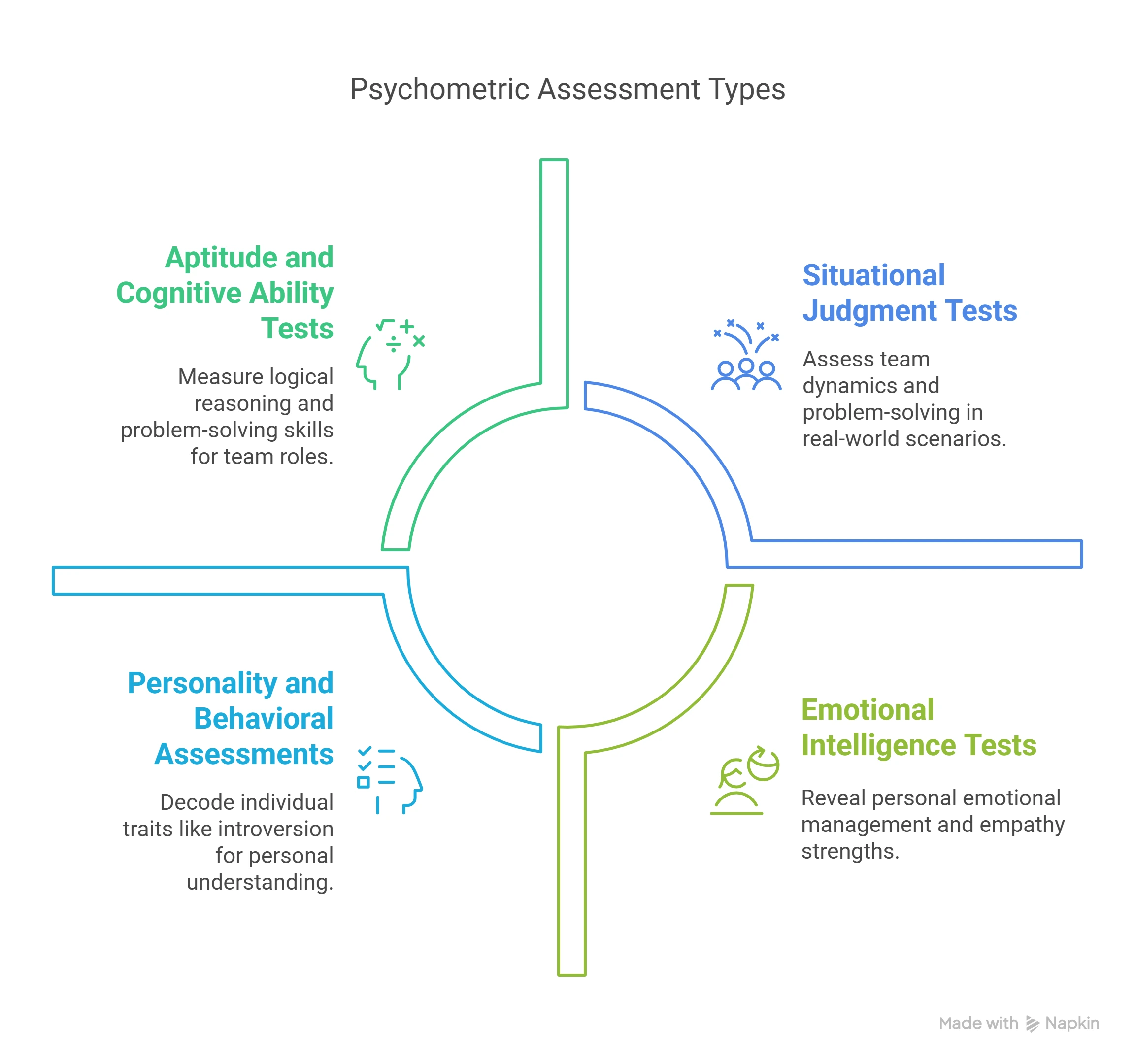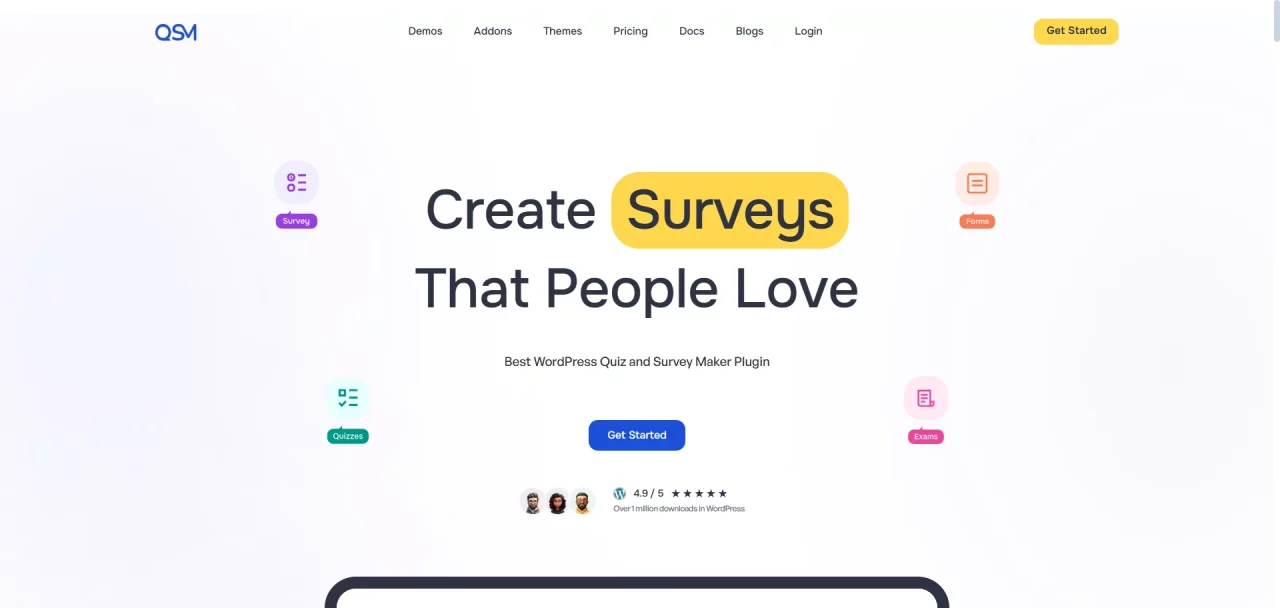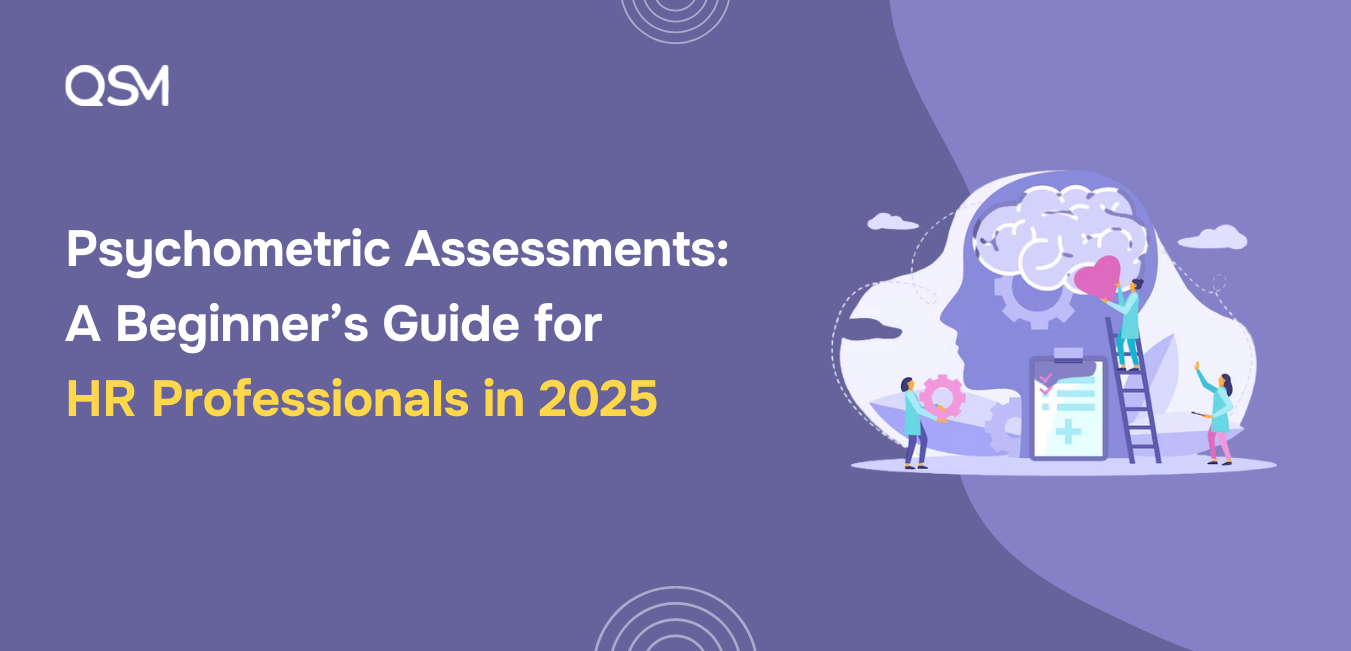Hiring the right talent has always been a challenge, but in today’s fast-paced world, relying solely on resumes and interviews is like navigating with half a map. Psychometric assessments are quickly becoming essential tools for HR professionals who want to go beyond credentials and get a fuller picture of who someone really is.
Whether you’re hiring, promoting, or building teams, this guide will walk you through everything you need to know to get started with psychometric testing.
What Are Psychometric Assessments?
Psychometric assessments are structured tests used to objectively measure a person’s mental capabilities, personality traits, behavioral tendencies, and emotional intelligence. Think of them as insights beneath the surface, offering a data-backed look into how someone thinks, solves problems, communicates, and collaborates.
They’re not just for high-stakes corporate hiring anymore. Today, even startups and educational institutions use psychometric tools to understand people better. When applied thoughtfully, they reduce guesswork and make people’s decisions more reliable.
The Key Types of Psychometric Tests
Understanding the different types of psychometric assessment tests is crucial, as each one reveals a different layer of the individual. It’s a bit like running multiple diagnostics on a car before a long journey. You check the engine (aptitude), the steering alignment (personality), and even how it handles on rough roads (emotional intelligence).

1. Aptitude and cognitive ability tests
These tests assess a candidate’s ability to learn, process information, and solve problems. They typically measure logical reasoning, verbal skills, numerical ability, or abstract thinking.
For example, when hiring for a data analysis role, an aptitude test can help you understand whether the candidate can think critically under pressure or quickly spot patterns in a dataset.
2. Personality and behavioral assessments
These assessments give insight into how people behave in different environments. Popular tools like the Big Five personality test or DISC profile help decode traits like introversion/extroversion, openness to new experiences, conscientiousness, and more.
This becomes particularly useful when building teams. Imagine hiring someone who is highly detail-oriented and prefers working independently into a high-collaboration, fast-paced team. Without understanding these dynamics in advance, even a talented hire can struggle.
Looking for an easy way to create a personality quiz? Read ‘How to Create a Personality Quiz in WordPress (4 Steps)’
3. Emotional intelligence (EQ) tests
EQ refers to how well someone understands and manages emotions – both their own and others’. It’s the ability to stay calm under stress, read social cues, empathize with colleagues, and resolve conflict smoothly.
Consider a customer service manager. While technical skills matter, it’s the ability to regulate emotions and stay patient during tough conversations that often makes or breaks the role. EQ tests reveal these hidden strengths (or gaps).
4. Situational judgment tests
SJTs present real-world scenarios and ask how a person would respond. These aren’t trick questions; they assess how aligned someone’s instincts are with your company’s culture or the role’s demands.
For instance, a candidate might be asked how they’d handle a tight deadline with a team member falling behind. Their response helps HR understand their problem-solving style, team dynamics, and ability to prioritize.
Benefits of Using Psychometric Assessments in HR
Integrating psychometric tools into your HR assessment process is like upgrading from manual guesswork to precision insights. Here’s how they help across the board:
Improves Hiring Accuracy and Predictability
Hiring based on gut feeling can lead to mismatched expectations. Psychometric data adds a predictive layer, helping you understand whether someone not only can do the job but will thrive in the role.
Enhances Team Compatibility and Culture Fit
Teams work better when members complement each other. By mapping out personalities, you can design teams where introverts aren’t drowned out, leaders don’t clash, and collaborators actually enjoy working together.
Supports Employee Growth and Development Planning
Psychometric insights aren’t just for hiring. They’re useful post-onboarding, too. Say you identify a team member who’s naturally inclined toward strategy but placed in a purely execution role. Now you have the data to support mentoring, upskilling, or even role adjustment.
Reduces Bias in Recruitment and Evaluation
Structured testing reduces unconscious bias. Unlike interviews, where accents, gender, or backgrounds can influence judgment, psychometric tests focus on abilities and behavioral tendencies, not surface impressions.
Boosts Retention Through Better Role Alignment
When employees feel they’re a good fit for their job, they stay longer. With psychometric insights, you can place people in roles where they naturally excel, reducing friction and burnout.
When and Where to Use Psychometric Tests in the Employee Lifecycle
Psychometric testing isn’t just a hiring tool. Here’s how it fits into every stage of an employee’s journey:
- Recruitment: Before the first round of interviews, shortlist candidates based on problem-solving ability, team fit, or stress tolerance.
- Interview Stage: Tailor your questions based on test results. For example, probe deeper into risk-taking tendencies or conflict resolution style.
- Onboarding: Share personality profiles with managers to create smoother handovers and personalized training paths.
- Learning & Development: Identify who needs leadership training versus who thrives in specialist roles.
- Succession Planning: Spot future leaders early and build a roadmap to grow them into their roles.
Team Restructuring: Realign teams based on complementary work styles and behavioral strengths.
How to Choose the Right Psychometric Tool or Platform
Not all tools are created equal. Some are science-backed and legally compliant, while others are gimmicky and unreliable. Here’s what to look for:
Validity, reliability, and scientific backing
This is non-negotiable. Always check if the tool has been peer-reviewed or validated by psychologists. A test without a scientific foundation can be misleading or even discriminatory.
Ease of implementation
HR teams shouldn’t need a tech team to run assessments. Look for platforms with intuitive dashboards, simple test creation, and easy user access.
Customization and reporting features
Generic reports don’t add value. The best tools allow for tailored scoring rubrics, competency tagging, and actionable insights – not just personality labels.
Using QSM for Creating Simple Psychometric Tools

If you’re new to psychometric testing or looking to experiment without investing in expensive platforms, tools like Quiz and Survey Master (QSM) can be a great starting point.
QSM allows you to build customized quizzes on your own website, perfect for initial screening, training needs analysis, or even internal feedback forms. You can define scoring ranges, add branching logic, and tailor the user experience, all with a few clicks.
It’s ideal for small teams, budget-conscious HR departments, or consultants who want flexibility in building their own assessments.
In Conclusion
Psychometric assessments are no longer just nice-to-haves. In 2025, they’ll be essential for forward-thinking HR leaders who want to build teams that are not only skilled but also self-aware, collaborative, and resilient.
But remember: tools alone won’t fix hiring or retention challenges. The value of psychometric testing lies in how you interpret and integrate the data. Use it to spark better conversations, not replace them.
If you’re just starting out, begin with one use case like hiring for a hard-to-fill role, and build from there. With the right tools, like QSM, and a mindset rooted in people-first insights, you can transform your HR processes into something far more intentional.
Also, read our detailed guide on How to Use Your Learning Style Quiz to Boost Engagement. (6 Easy Steps) and Everything You Need to Know About QSM 10




